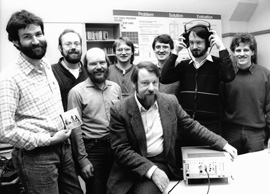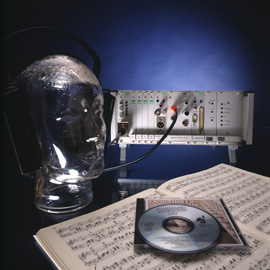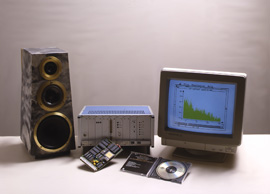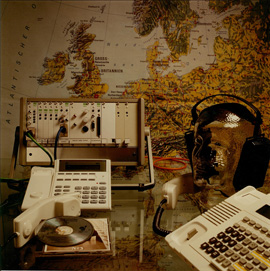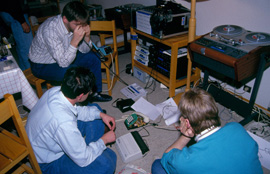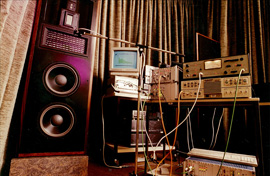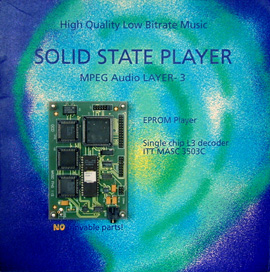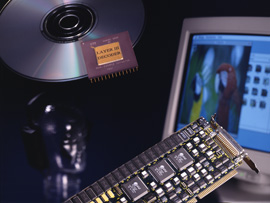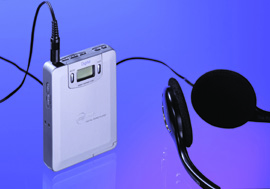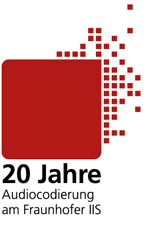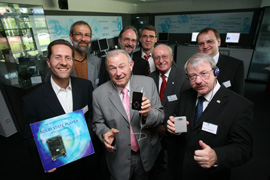Pre-1987
Early 1970s: Prof. Dieter Seitzer of Erlangen-Nuremberg University in Germany begins wrestling with the problem of transmitting speech in high quality over phone lines. Although a first patent application was rejected, he establishes a group of students interested in audio coding research who start tackling the problem for their diploma and Ph.D. theses.
Late 1970s: With the introduction of ISDN and fiber optic cables for telecommunication, improved speech coding seems to become less important. As a new idea, the team of Prof. Seitzer starts research in coding of music signals.
1979: Prof. Seitzer's team develops the first digital signal processor capable of audio compression. During subsequent development, Karlheinz Brandenburg, a student in that team, starts employing psychoacoustic principles in the audio coding schemes, feeding back important findings and corrections into the science of the hearing properties of the human ear. Guided by Prof. Seitzer, Brandenburg and the team achieve continuous improvement of their coding algorithms.
1981: The Compact Disc is presented to the public. For storing audio data, it uses uncompressed linear PCM with 16 bit/sample.
 Fraunhofer Institute for Integrated Circuits IIS
Fraunhofer Institute for Integrated Circuits IIS